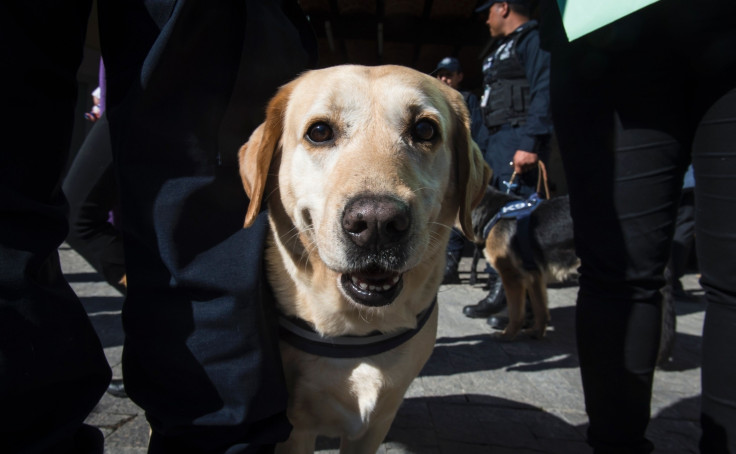What is osteosarcoma? Terminally ill police dog receives a hero's salute before being euthanised
The dog was retired from duty after the deadly disease started spreading and soon a veterinarian recommended the dog be euthanised.

In a heart-breaking incident, the entire team of the Lonoke County Sheriff's Office gathered in central Arkansas to bid a final goodbye to their beloved dog before he was euthanised.
Patji received a hero's salute on Wednesday, 24 January, when he and his handler, Deputy Brooks Grabill, walked together into a building where the dog was put down. He had joined the sheriff's office in 2013 as a K-9 officer but a few months ago was diagnosed with osteosarcoma, a form of bone cancer.
The dog was retired from duty after the deadly disease started spreading and soon a veterinarian recommended that the dog be euthanised.
Describing the pain of putting down a friend, Grabill told Little Rock television station KTHV, "The dog's always with you. He's with you more than your family. You wake up and you go to work; he's with you. Go home, take off your vest, he's right there with you, as well.
"You eat dinner together, you eat lunch in your car together. It's a bond. And it's hard to see something like this happen."
While Canine Deputy Rob Ruble said, "Being a canine handler, you're with these dogs 24/7. The bond with them is just outrageous."
"It's like losing a partner. That's what it is. These guys have lost their partner," Ruble said describing the pain of Grabill and Pajti's former handler, Tyler Barber.
"We have to show respect to the dogs just like we would any other deputy. They have a badge and an ID just like every other deputy out there. They're part of the department, they're part of our family," he added.
On the day he was euthanised, a last call was also made in Pajti's honour, which said: "Attention all units. This is Deputy K9 Pajti's last ride. Deputy K9 Pajti: Thank you for your service to the citizens of Lonoke County and surrounding areas.
"Deputy Pajti, you have served in a special manner, and it has been an honour to serve with you. Rest in peace, we will take it from here."
Osteosarcoma in dogs
Osteosarcoma is the most common bone tumour dogs can get. The painful disease typically affects large breed older dogs but animals one to two years of age can also be diagnosed with it. Male dogs are at a higher risk of being affected by the disease, which is curable but the long-term diagnosis for the animal is poor.
Swelling, lameness, and joint or bone pain without any known trauma or injury are the possible symptoms of the disease. In some cases, dogs even start to appear tired or have anorexia – a very serious condition causing an animal to refuse to eat totally.
The most common sites for osteosarcoma are the distal radius, proximal humerus, distal femur, and proximal tibia.
Treatment of osteosarcoma
Osteosarcoma is a highly aggressive disease, which means it spreads to other parts of the body rapidly. Affected body parts may have to be amputated during the initial phase of treatment. This is usually followed by systemic chemotherapy to treat the cancer that has spread from the original tumour to other parts of the body.
Doctors believe that systemic chemotherapy started immediately is the best course of action considering 90% of osteosarcomas spread to the lungs, proving fatal for the patient in no time.





















